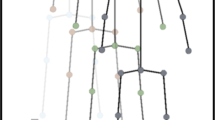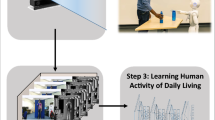Abstract
Rehabilitation training for patients with limb activity dysfunction and sub-healthy state has gradually shifted from therapies to strategies with remote assistance. Stochastic configuration networks (SCNs) are characterized by a structure that varies with task complexity, making them ideal for use as the lightweight AI activity recognition model in a remote rehabilitation training system. Given an imbalanced data classification and large-scale data analytics task, the original SCN classifiers may fail to provide satisfied performance. In this paper, we propose two solution that are Bagging SCNs and Boosting SCNs for HAR based on SCNs. Bagging SCNs use the bootstrap method to generate balanced subsets to reduce the influence caused by imbalance dataset. Then, multiple SCNs models are trained in parallel, followed by the identification of the best ensemble model through validation sets. Boosting SCNs employ forward stagewise additive modeling and utilize the SAMME algorithm to minimize the multi-class exponential loss for multi-class classification. This algorithm progressively enhances the base learner’s focus on previously misclassified instances from previous rounds, ultimately lowering the misclassification rate. The activity datasets of three groups of tests are collected by using a self-built experimental platform. Our experiments compare the performance of two Ensemble SCNs with original SCNs, Convolutional Neural Networks, Long Short-Term Memory, Gradient Boosting Decision Tree(GBDT) and Support Vector Classifier. Results in the performance of two Ensemble SCNs demonstrate that our proposed algorithm has good potential to be applied for HAR algorithm.










Similar content being viewed by others
Availability of data
The datasets analyzed during the current study are not publicly available due to protect patient privacy.
References
O’Brien MK, Shawen N, Mummidisetty CK, Kaur S, Bo X, Poellabauer C, Kording K, Jayaraman A (2017) Activity recognition for persons with stroke using mobile phone technology: toward improved performance in a home setting. J Med Internet Res 19(5):7385
Lord SE, McPherson K, McNaughton HK, Rochester L, Weatherall M (2004) Community ambulation after stroke: how important and obtainable is it and what measures appear predictive? Arch Phys Med Rehabil 85(2):234–239
Grant JS, Elliott TR, Weaver M, Bartolucci AA, Giger JN (2002) Telephone intervention with family caregivers of stroke survivors after rehabilitation. Stroke 33(8):2060–2065
Qiu Q, Cronce A, Patel J, Fluet GG, Mont AJ, Merians AS, Adamovich SV (2020) Development of the home based virtual rehabilitation system (HoVRS) to remotely deliver an intense and customized upper extremity training. J Neuroeng Rehabil 17:1–10
Gupta N, Gupta SK, Pathak RK, Jain V, Rashidi P, Suri JS (2022) Human activity recognition in artificial intelligence framework: a narrative review. Artif Intell Rev 55(6):4755–4808
Sruthi P, Udgata SK (2022) An improved wi-fi sensing-based human activity recognition using multi-stage deep learning model. Soft Comput 26(9):4509–4518
Aslan MF, Durdu A, Sabanci K (2020) Human action recognition with bag of visual words using different machine learning methods and hyperparameter optimization. Neural Comput Appl 32:8585–8597
Zhu R, Xiao Z, Li Y, Yang M, Tan Y, Zhou L, Lin S, Wen H (2019) Efficient human activity recognition solving the confusing activities via deep ensemble learning. IEEE Access 7:75490–75499
Lara OD, Labrador MA (2013) A survey on human activity recognition using wearable sensors. IEEE Commun Surv Tutor 15(3):1192–1209. https://doi.org/10.1109/SURV.2012.110112.00192
Ahmed Bhuiyan R, Ahmed N, Amiruzzaman M, Islam MR (2020) A robust feature extraction model for human activity characterization using 3-axis accelerometer and gyroscope data. Sensors 20(23):6990
Tong L, Ma H, Lin Q, He J, Peng L (2022) A novel deep learning Bi-GRU-I model for real-time human activity recognition using inertial sensors. IEEE Sens J 22(6):6164–6174
Xia K, Huang J, Wang H (2020) LSTM-CNN architecture for human activity recognition. IEEE Access 8:56855–56866
Anguita D, Ghio A, Oneto L, Llanas Parra FX, Reyes Ortiz JL (2013) Energy efficient smartphone-based activity recognition using fixed-point arithmetic. J Univ Comput Sci 19(9):1295–1314
Csizmadia G, Liszkai-Peres K, Ferdinandy B, Miklósi Á, Konok V (2022) Human activity recognition of children with wearable devices using lightGBM machine learning. Sci Rep 12(1):1–10
Cheng X, Zhang L, Tang Y, Liu Y, Wu H, He J (2022) Real-time human activity recognition using conditionally parametrized convolutions on mobile and wearable devices. IEEE Sens J 22(6):5889–5901. https://doi.org/10.1109/JSEN.2022.3149337
Zhang X, Yu H, Yang Y, Gu J, Li Y, Zhuang F, Yu D, Ren Z (2022) Harmi: human activity recognition via multi-modality incremental learning. IEEE J Biomed Health Inform 26(3):939–951. https://doi.org/10.1109/JBHI.2021.3085602
Ni Q, Fan Z, Zhang L, Nugent CD, Cleland I, Zhang Y, Zhou N (2020) Leveraging wearable sensors for human daily activity recognition with stacked denoising autoencoders. Sensors 20(18):5114
Felicetti MJ, Wang D (2022) Deep stochastic configuration networks with different random sampling strategies. Inf Sci 607:819–830
Wang D, Li M (2017) Stochastic configuration networks: Fundamentals and algorithms. IEEE Trans On Cybernetics 47(10): pp. 3466-3479
Wang Q, Hong Q, Wu S, Dai W (2022) Multi-target stochastic configuration network and applications. IEEE Transactions on Artificial Intelligence
Lu J, Ding JL, Dai X, Chai T (2020) Ensemble stochastic configuration networks for estimating prediction intervals: a simultaneous robust training algorithm and its application. IEEE Trans Neural Netw Learn Syst 31(12):5426–5440
Kushwaha A, Khare A, Prakash O (2023) Micro-network-based deep convolutional neural network for human activity recognition from realistic and multi-view visual data. Neural Comput Appl 1–21
Dai W, Ning C, Nan J, Wang D (2022) Stochastic configuration networks for imbalanced data classification. Int J Mach Learn Cybern 1–13
Hastie T, Rosset S, Zhu J, Zou H (2009) Multi-class adaboost. Stat Its Interface 2(3):349–360
Saleem G, Bajwa UI, Raza RH (2023) Toward human activity recognition: a survey. Neural Comput Appl 35(5):4145–4182
Acknowledgements
This research is supported by the National Key R &D Program of China under Grant 2018AAA0100304.
Author information
Authors and Affiliations
Corresponding author
Ethics declarations
Conflict of interest
The authors declared no potential conflicts of interest with respect to the research, authorship and publication of this article.
Additional information
Publisher's Note
Springer Nature remains neutral with regard to jurisdictional claims in published maps and institutional affiliations.
Rights and permissions
Springer Nature or its licensor (e.g. a society or other partner) holds exclusive rights to this article under a publishing agreement with the author(s) or other rightsholder(s); author self-archiving of the accepted manuscript version of this article is solely governed by the terms of such publishing agreement and applicable law.
About this article
Cite this article
Jiao, W., Li, R., Wang, J. et al. Activity recognition in rehabilitation training based on ensemble stochastic configuration networks. Neural Comput & Applic 35, 21229–21245 (2023). https://doi.org/10.1007/s00521-023-08829-x
Received:
Accepted:
Published:
Issue Date:
DOI: https://doi.org/10.1007/s00521-023-08829-x




